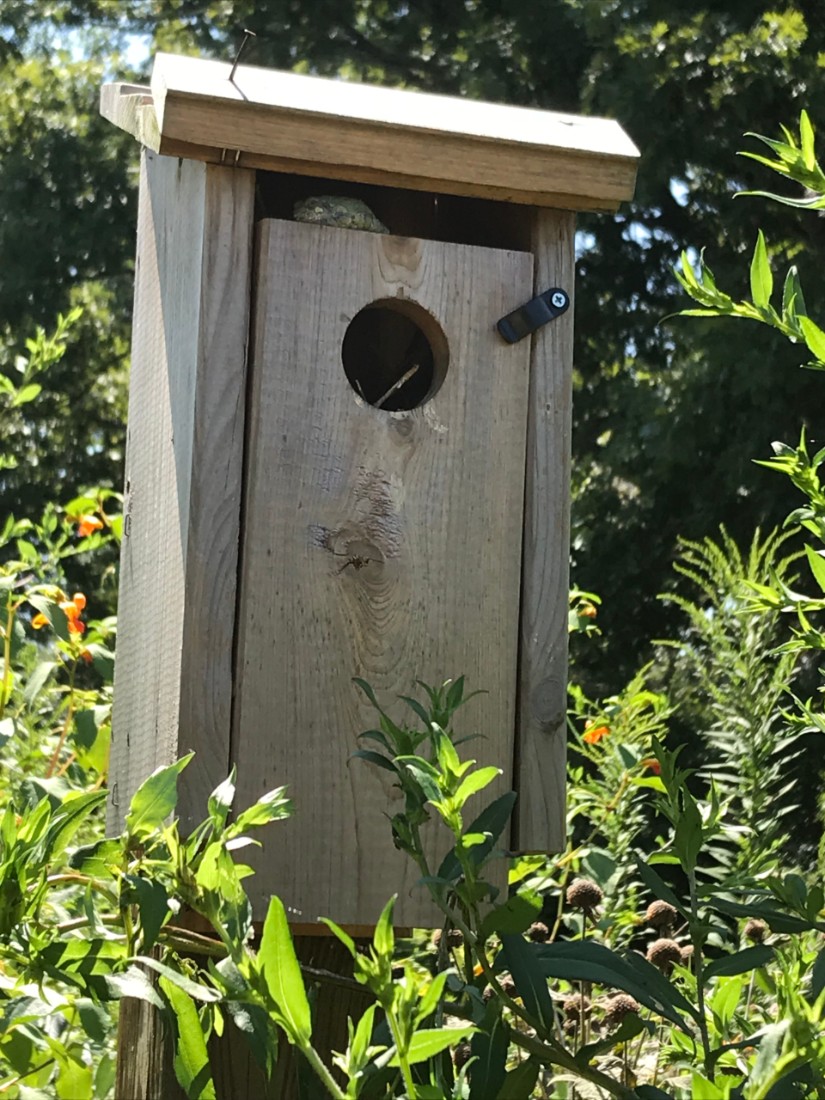“[W]e need to practice conservation in areas outside our parks as well as inside them. And this means we need to practice conservation where we live, where we work, and where we farm.”
—Doug Tallamy, “Nature’s Best Hope”
It’s true. Nature doesn’t stop at the edge of the nature preserve. Wild creatures need homes throughout our landscapes—and with our natural environment under serious pressure, they need them more than ever. That’s why every month, we produce our Habitat at Home columns, with seasonal tips like how to grow native plants or put up nesting boxes.
When you take steps like these in your own yard, you’re part of the solution. And it’s deeply rewarding, with more beautiful living things to share your space! In our annual spring Habitat at Home contest, we’ll ask you to show us what you’re working on and what animals you’re seeing. So go wild!
Favorite Habitat at Home Topics
We are very excited to introduce our new Complete Guide to Butterfly Gardening in WNC and Upstate SC. Check it out!
We’ve also seen a lot of interest in these Habitat at Home topics:
- How to Grow Milkweed
- Monarch Migration: More than Milkweed
- What to Do About Kudzu
- Where to Find Native Plants in WNC and Upstate SC
- Providing Backyard Habitat for Fireflies
- Creating Moth Gardens and Moon Gardens
- Bird Friendly Yard Checklist
- How to Clean Bird Baths, Feeders, and Houses
- Set Your Bluebirds Up for Success
- How to Create Habitat for Stem Nesting Bees
- Shade Your Stream
- Reusing Your Christmas Tree to Restore Streambanks
- Bradford Pears: Pretty but Invasive
You can see the most recent, seasonal Habitat at Home columns here.

Gardening for the Planet Course
We are partnering with WNC-based Spriggly’s Beescaping to offer you a discount on their Gardening for the Planet course. There are over 15 hours of content that you can take at your own pace. Topics include everything from native bees, to rain gardens, to choosing native plants and so much more! The cost of the course is $200 for lifetime access or month-to-month access for $20 per month. Now, Spriggly’s is generously offering to donate $25 to Conserving Carolina for every $200 purchase made using this link. You will also get a 10% ($20) discount on your purchase, so you are both saving money and supporting conservation.
Restoring the Living World
The natural world is in peril, with scientists predicting one million extinctions on our watch! We can’t let that happen—especially not here in the Southern Appalachian region, where we live among some of the greatest biodiversity in the United States.
When you cultivate a living landscape at your home, you are playing a hands-on role in conservation. Lively yards and gardens help connect larger natural areas, expanding animals’ range. And even tiny animals you might see in your yard, like bees or caterpillars, provide benefits for living things through the whole food web.
The good news is that, once you start restoring habitat where you live, you quickly start seeing more life—from birds, butterflies, and turtles to the amazing array of creatures that stopped at one small watering hole on a single acre of land in Henderson County, caught on this critter cam video.
SUBSCRIBE TO GET SEASONAL TIPS
Empowering and Joyful
That’s why farmer and educator Kim Bailey says that gardening for pollinators has caught on.
“Everyone wants to do something to help, but it’s a happy thing that you’re doing and it doesn’t feel like a sacrifice. It’s contagious. It’s an empowering thing and it’s a joyful thing.”
You might be growing a few pollinator-friendly plants on your balcony. You might be improving the health of a stream on the edge of your yard. You might be practicing good stewardship of a farm or forest. Or, you could be working with your community, bringing more life to schools, street corners, parks, playgrounds, or churches. You’re also welcome to volunteer with us, enhancing natural habitat in places from working farms to mountain bogs to forested preserves. In all of these cases, you are helping to restore the natural world. Which is good—we can’t live without it.
To follow our Habitat at Home columns, you can find them in our News stories or our Facebook page, or by subscribing to our emails.
